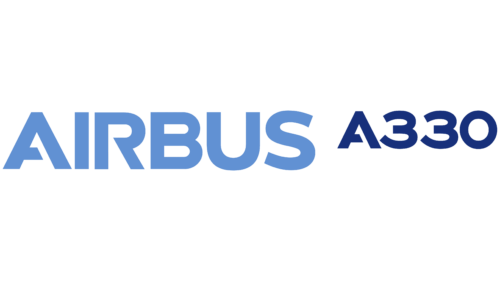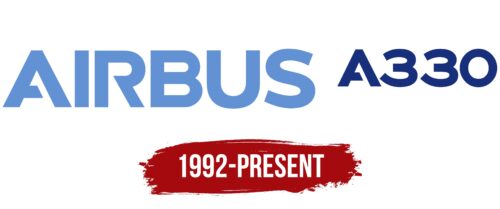A330: Brand overview
In the mid-1970s, Airbus embarked on a journey with its first wide-body aircraft, the A300. This was a stepping stone that led to the development of the A330, a twin-engine aircraft designed to enhance global air travel. Airbus envisioned the A330 replacing older models like the McDonnell Douglas DC-10 and the Lockheed L-1011. The goal was to create an aircraft that offered better efficiency and could meet the evolving needs of airlines and their passengers.
By June 1987, Airbus had officially launched the A330 alongside the A340, securing substantial orders from various airlines. The A330 was tailored for medium to long-range flights. The A330-300, the first variant, was introduced to the skies on November 2, 1992. With a typical three-class setup, it accommodated 295 passengers and ranged up to 6,650 nautical miles. Commercial operations for the A330-300 started on January 17, 1994, with Air Inter, a French airline. The aircraft quickly became favored for its advanced technology, fuel efficiency, and the comfort it offered passengers.
In 1998, in response to the airline demand for aircraft capable of flying long distances, Airbus introduced the A330-200. This variant had a slightly shorter fuselage and could fly up to 7,250 nautical miles, ideal for longer and less traveled routes. It accommodates around 247 passengers.
Throughout the 2000s, the A330 family gained traction globally. Enhancements and new versions kept the aircraft competitive and attractive to airlines. 2004 Airbus expanded into the cargo sector with the A330-200F, a freighter version that could carry 70 tons of cargo over 4,000 nautical miles. Airbus adapted the A330-200 into the Multi Role Tanker Transport (MRTT), a military variant used for air-to-air refueling and strategic transportation by several global air forces.
The A330 story continued significantly in 2014 when Airbus launched the A330neo. This new version included upgraded aerodynamics, state-of-the-art engines, and the latest technologies, further enhancing fuel efficiency and reducing operational costs. The A330neo variants, the A330-800 and A330-900, first took to the skies in October 2017 and began service with TAP Air Portugal in December 2018.
As of 2021, the A330 family had secured over 1,500 orders from more than 120 customers. The aircraft has significantly contributed to the expansion of long-haul routes and the connectivity of secondary cities, facilitating the opening of new markets and offering passengers direct flight options.
The enduring success of the A330, marked by constant advancements and adaptability, reflects Airbus’s dedication to advancing aviation technology and its commitment to the future of air transportation. As the A330 family continues to evolve, it remains a pivotal player in the wide-body aircraft market, set to maintain its status for the foreseeable future.
Meaning and History
What is A330?
Becoming the centerpiece of the Airbus aircraft lineup, the A330 was a wide-body aircraft of great significance. Derived from the A300, Airbus’ first airliner of the mid-1970s, development of the two-seat A330 was carried out in parallel with the development of the four-seat A340. As a result of this important work, the company received its first orders for both aircraft in June 1987. The first such aircraft, the A330-300, took to the air in November 1992, marking an era of groundbreaking innovation in aviation.
1992 – today
The A330 logo prominently features the name of the company to which the brand belongs. “AIRBUS” is written in capital letters and light blue on the left. The model of the airplane is indicated in the upper right corner. It is slightly reduced in size but remains visible due to the dark blue color. The color palette of the emblem is associated with the sky, constancy, and safety. The designers chose a bold sans-serif font to ensure the clarity of the text. A distinctive feature of the font is the open letters “A” and “R” with not fully extended horizontal lines.
The light blue color of the company name symbolizes openness and technological advancement, which aligns with modern technologies used in aviation. The dark blue color of the model aircraft contrasts well with the lighter shade, drawing attention to the specific type of aircraft that the logo represents. The bold sans-serif font gives the logo a modern look, emphasizing the forward-thinking nature of the company. The unique lettering of the letters “A” and “R” gives the logo a personal touch, distinguishing it from standard fonts and adding an element of brand recognition.
FAQ
How long can the A330 fly?
The Airbus A330-200 is well-known for flying long distances and for long periods. It can fly non-stop for over 14 hours, covering about 7,250 nautical miles (13,430 kilometers). This allows it to connect faraway cities in one flight. Its long range comes from its design, efficient engines, and large fuel tanks. These features make the A330-200 a reliable choice for airlines offering flights that last many hours while keeping passengers comfortable.
Is the Airbus A330 a big plane?
Yes, the Airbus A330 is a large aircraft known for its wide-body and twin-engine design, which makes it well-suited for long international flights. Here’s an overview of what makes it so capable.
Size and Capacity
- Fuselage Width: The A330’s wide body provides a spacious interior, making the cabin comfortable for passengers.
- Passenger Capacity: The plane typically holds between 200 and 300 passengers, depending on the seating arrangement. This makes it large enough to carry many passengers or significant cargo.
- Cabin Layout: The A330 includes two aisles, a standard feature in wide-body planes that improves passenger comfort and accessibility, especially on longer flights.
Performance and Range
- Engine Power: The A330’s two powerful engines mounted under the wings enable it to perform long-range flights efficiently, which helps keep fuel costs down.
- Flight Range: It can fly distances from short-haul to long-haul international routes, covering up to approximately 13,430 kilometers (about 8,350 miles) without refueling.
Use in Global Aviation
- Versatility: The A330 is used for various purposes, including passenger flights, cargo, and military applications, demonstrating its adaptability.
- Global Use: Many airlines fly it worldwide, showing its reliability and effectiveness as a large aircraft for global operations.
With its substantial size, passenger capacity, and long-range abilities, the Airbus A330 stands out in the commercial aviation industry. Its widespread use across different airlines and roles highlights its importance and versatility.
Why is the A330 so popular?
The Airbus A330 is popular mainly because it uses fuel very efficiently. This is important in the aviation industry, where saving on fuel costs is crucial. Here’s a simplified explanation of its key features and why airlines favor it:
- Fuel Efficiency
- Cost-Effectiveness
- Versatility and Range
- Passenger Comfort
- Reliability
The Airbus A330 is a favorite among airlines due to its fuel efficiency, cost-effectiveness, versatility, comfort, and reliability. These benefits help explain why it’s been so successful in the commercial aviation market.
What does the term Airbus A330 mean?
The “Airbus A330” is an aircraft model created by Airbus, a leading European aerospace company. It is part of the wide-body family, designed to travel long distances and carry more passengers and cargo than smaller, single-aisle planes.
Airbus developed the A330 to build upon their earlier wide-body aircraft, the A300. The A330, designed simultaneously as the four-engine A340, shares many features with it, such as the body and wings. This similarity in design allowed Airbus to produce both models more efficiently and cost-effectively. Airbus launched the A330 and A340 in 1987, receiving their initial summer orders. These models expanded Airbus’s offerings, allowing them to serve a wider range of flight distances from medium to very long. The A330 is typically equipped with two engines, making it fuel-efficient for long flights and an ideal choice for airlines operating international routes. Airbus has continually upgraded the A330 with the latest technology, improving its efficiency and passenger comfort.
What type of airplane does the A333 belong to?
The Airbus A333, or the A330-300, is a large twin-engine aircraft in the Airbus A330 family. It’s the largest in this family, designed to be fuel-efficient and capable of carrying many passengers, making it ideal for medium to long-haul flights.
Introduced in 1993, the A333 was developed as a twin-engine alternative to the four-engine A340. This design choice aimed to provide airlines with the economic benefit of using a twin-engine plane for routes typically served by the more expensive four-engine planes but at lower operational costs. The A330-300 can carry about 300 passengers in a typical two-class setup. It offers various seating arrangements to adjust passenger capacity and comfort. The plane has a long range and can fly up to about 6,350 nautical miles, making it suitable for significant distances due to its fuel efficiency.
Since its introduction, the A333 has become a popular choice among airlines globally because of its efficiency and capacity. It’s versatile enough to handle both shorter regional and longer intercontinental flights. Airlines prefer the A330-300 for its reliability and the lower risk of operating twin-engine aircraft over long and remote oceanic routes.
How to identify the A330?
To identify an Airbus A330 among other aircraft, you can note several unique features that help distinguish it from other models. The wings of the A330 are a key identifier. They have a pronounced upward angle, known as wing dihedral, and feature winglets at the tips that curve upward. These winglets help reduce air resistance and improve fuel efficiency, contributing to the plane’s distinctive look and performance.
Another notable feature is a protrusion near the main landing gear under the fuselage. This part of the landing gear housing is visible when the gear is retracted and is not commonly found on other aircraft, making it a clear sign you’re looking at an A330.
The A330 is equipped with two large engines, one under each wing. These large engines fit the plane’s needs for powerful thrust on long-haul flights. The size and position of these engines relative to the wings and fuselage are additional visual clues for identifying the aircraft.
Lastly, the A330’s tail helps in its recognition. It features a standard Airbus vertical stabilizer taller and more swept back than many other planes. While the tail might carry unique airline branding, its shape and size remain consistent across all A330s.
Why is the A330 called the “butter churn”?
The nickname “butter churn” for the Airbus A330 stems from its smooth landing capabilities. This playful term in aviation describes how the aircraft achieves landings so gently that they feel like “butter.” The nickname specifically relates to the A330’s landing gear design.
The A330’s landing gear is slightly sloped, which helps soften the impact when the aircraft lands. This design helps make the landing experience smoother and more comfortable for passengers. The noticeable softness of the landing has led to comparisons with a “butter churn,” a tool used to make butter by smoothly stirring cream. Pilots and aviation enthusiasts use this term because it vividly describes the smooth, fluid landing experience of the A330.





